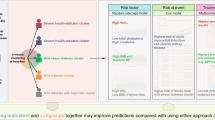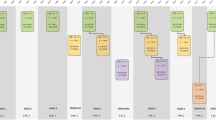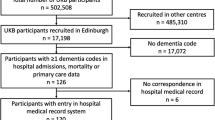Abstract
We determined whether case-mix information from administrative data can identify those likely to be high users of healthcare in the following year. An individual's healthcare utilization equaled the number of days (between 1 and 365) during the year on which an individual received inpatient or outpatient services. A binary outcome was defined as using 92 days or more (i.e., being in the top 2%) in year two. We included case-mix data in the models from two risk adjustment systems, Adjusted Diagnostic Groups (ADGs) from Adjusted Clinical Groups and Hierarchical Condition Categories (HCCs) from Diagnostic Cost Groups. We examined three types of logistic regression models: (1) prior use models (year one utilization plus age and sex), (2) diagnostic models (HCCs and ADGs as dummy variables plus age and sex), and (3) combined models (prior use plus diagnostic models). For the models with the best c-statistics (i.e., area under the receiver operating characteristic (ROC) curve), we compared ROC curve plots. We also fit linear regression models and compared their sensitivity and specificity to the logistic models.
Although diagnostic and prior use models performed comparably, the models with the best ROC curves in predicting high users of healthcare combined prior use and diagnostic information. Logistic and linear regression models discriminated between cases similarly. While prior utilization has traditionally been used to predict future healthcare use, we found that case-mix information may be as important as prior use in identifying those who may be the highest users of healthcare in the future.
Similar content being viewed by others
References
Ambulatory Care Data Capture. VHA Directive 96-057, Department of Veterans Affairs, Washington, DC, 1996.
Medicare 2000: 35 years of improving Americans' health and security. Health Care Financing Administration, Washington, DC, 2000.
Agresti, A. Categorical data analysis, John Wiley &; Sons, New York, 1990.
Ash, A., Zhao, Y., Ellis, R.P., and Kramer, M.S., “Finding future high-cost cases: Comparing prior cost versus diagnosis-based methods,” Health Services Research 26, 194-206, 2001.
Ash, A.S., Ellis, R.P., Pope, G.C., Ayanian, J.Z., Bates, D.W., Burstin, H., Iezzoni, L.I., MacKay, E., and Yu, W., “Using diagnoses to describe populations and predict costs,” Health Care Financ Rev 21, 7-28, 2000.
Boult, C., Boult, L.B., Morishita, L., Dowd, B., Kane, R.L., and Urdangarin, C.F., “A randomized clinical trial of outpatient geriatric evaluation and management,” J Am Geriatr Soc 49, 351-359, 2001.
Ellis, R.P., Pope, G.C., Iezzoni, L., Ayanian, J.Z., Bates, D.W., Burstin, H., and Ash, A.S., “Diagnosis-based risk adjustment for Medicare capitation payments,” Health Care Financ Rev 17, 101-128, 1996.
Kashner, T.M., “Agreement between administrative files and written medical records:Acase of the Department of Veterans Affairs,” Medical Care 36, 1998.
Lamoreaux, J., “The organizational structure for medical information management in the Department of Veterans Affairs. An overview of major health care databases,” Med Care 34, MS31-MS44, 1996.
Lynch, J.P., Forman, S.A., Graff, S., and Gunby, M.C., “High-risk population health management-Achieving improved patient outcomes and near-term financial results,” Am J Manag Care 6, 781-791, 2000.
Malphurs, F.L. and Striano, J.A., “Gaze into the long-term care crystal ball: TheVeterans Health Administration and aging,” Journal of Gerontology 56A, 2001.
Meenan, R.T., O'Keefe-Rosetti, M.C., Hornbrook, M.C., Bachman, D.J., Goodman, M.J., Fishman, P.A., and Hurtado, A.V., “The sensitivity and specificity of forecasting high-cost users of medical care,” Medical Care 37, 815-823, 1999.
Rosen, A.K., Loveland, S.M., Anderson, J.J., Rothendler, J.A., Hankin, C.S., Rakovski, C.C., Moskowitz, M.A., and Berlowitz, D.R., “Evaluating diagnosis-based case-mix measures; How well do they apply to the VA population?” Medical Care 39, 6972-704, 2001.
Smith, N.S. and Weiner, J.P., “Applying population-based case mix adjustment in managed care: The Johns Hopkins Ambulatory Care Group system,” Manag Care Quarterly 2, 21-34, 1994.
Weiner, J.P., Starfield, B.H., Steinwachs, D.M., and Mumford, L.M., “Development and application of a population-oriented measure of ambulatory care case-mix,” Med Care 29, 452-472, 1991.
Author information
Authors and Affiliations
Corresponding author
Rights and permissions
About this article
Cite this article
Rakovski, C.C., Rosen, A.K., Wang, F. et al. Predicting Elderly at Risk of Increased Future Healthcare Use: How Much Does Diagnostic Information Add to Prior Utilization?. Health Services & Outcomes Research Methodology 3, 267–277 (2002). https://doi.org/10.1023/A:1025866331616
Issue Date:
DOI: https://doi.org/10.1023/A:1025866331616




